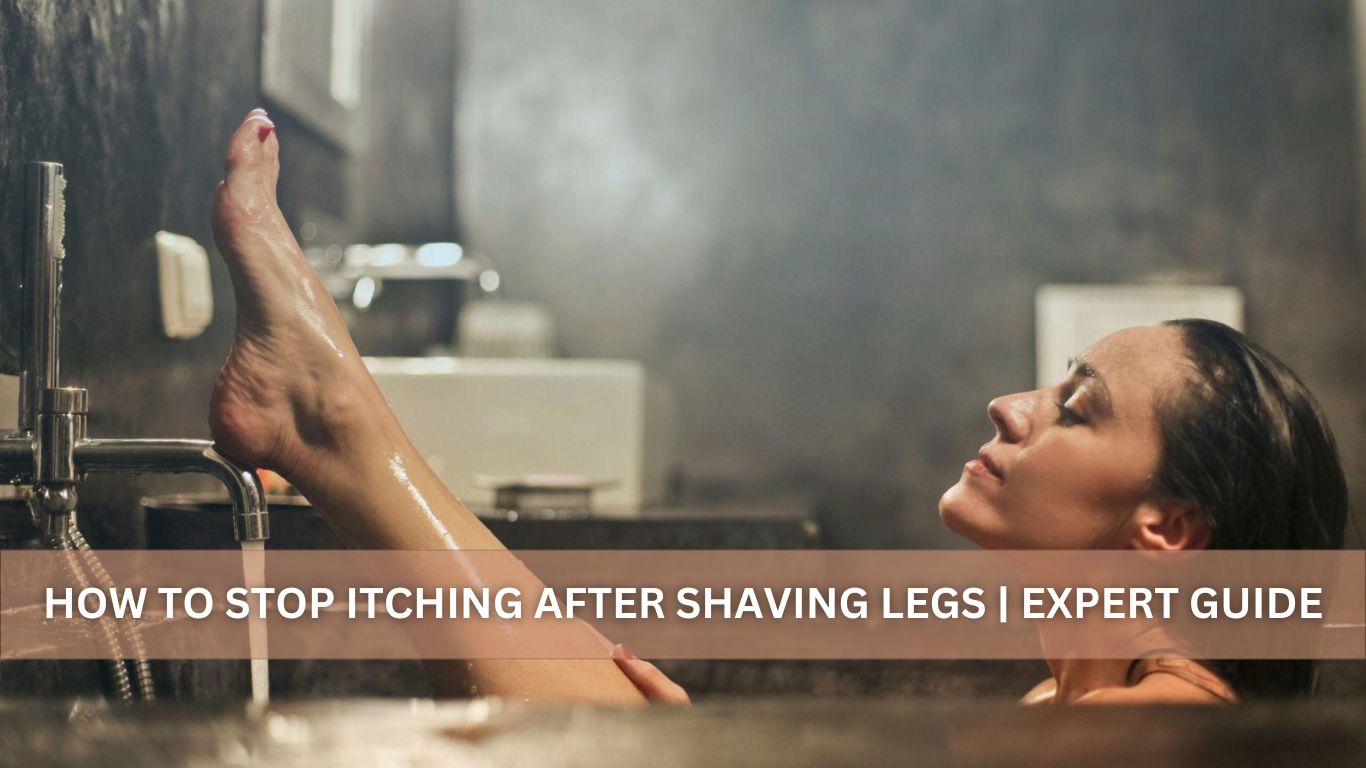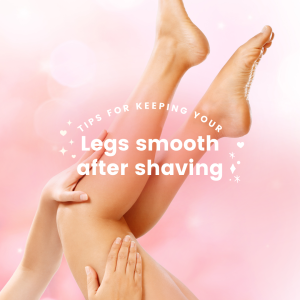Key Details: Get rid of itching after Shaving
A holistic approach toward your skin will soothe irritation after shaving your legs and promote long-term skin health. Follow these tips to prevent post-shave itching:
- Exfoliate: Gently exfoliate your legs before shaving to remove dead skin cells. This helps reduce the risk of ingrown hairs and makes for a smoother shave.
- Sharpen Up: A sharp razor reduces the need for multiple passes over the same area—dull blades can tug at the hairs, leading to irritation, nicks, and an uneven shave.
- Warm Up: Prepare your skin with lukewarm water and shaving cream, avoiding hot water to prevent the loss of natural oils and irritation.
- Moisturize Before and After: Use a moisturizing shaving cream or gel to create a protective barrier and reduce friction. Avoid using soap, as it can dry out your skin. Use an alcohol-free moisturizer right after shaving for a soothing treat for your skin.
- Shave in the Right Direction: Shave in the direction of hair growth to minimize irritation and prevent ingrown hairs.
- Cold Compress Magic: Rinse your legs with cool water to close the pores. Or give your legs a quick chill with a cold, damp cloth.
- Aloe Vera, the Skin Savior: Slather on some aloe vera gel. It’s nature’s cooling balm to rescue your legs from redness and itching.
- Hydrocortisone to the Rescue: For those days when irritation is a little too enthusiastic, a dab of hydrocortisone cream can save the day.
- Don’t Scratch It: Avoid scratching, as it can worsen irritation and delay healing.
- Avoid Tight Clothing: Wear loose-fitting clothing after shaving to avoid friction and irritation on freshly shaved skin.
- Gentle Products: Opt for shaving products designed for sensitive skin. Your legs will thank you for being so considerate.
How to stop Legs from Itching after Shaving
Feeling cleaner after shaving feels great as it leaves your skin smooth and hair-free, but it often leads to irritating itching. This distress turns a simple grooming routine into a painful experience. Addressing and preventing the itching after shave is essential for maintaining comfort and healthy skin. This article explores the causes of post-shave itching, provides preventive measures, and offers effective treatments backed by scientific research to soothe your skin.
Understanding Post-Shave Itching
The American Academy of Dermatology reports that skin irritation from shaving affects a significant portion of the population, leading to various skin conditions if not properly managed. The itchy sensation can vary in intensity from mild discomfort to severe irritation. Typically, it lasts for a few hours to a couple of days, depending on skin sensitivity and shaving techniques.
Understanding post-shave itching is crucial for effectively managing and mitigating agitation. By identifying the underlying causes—such as irritation, dryness, or ingrown hairs—you can select appropriate products and techniques to reduce itching.
Causes of Post-Shave Itching
Post-shave itching often stems from the blades that come into contact with your skin. As you shave, hair follicles continue to grow hair beneath the skin’s surface, and the friction from the razor can cause irritation. Using grooming products with heavy fragrances or alcohol can also contribute to the problem. By pinpointing what’s causing the itch—be it the razor’s aggression, skin sensitivity, or hydration issues—you can tailor your approach to address the root of the problem.
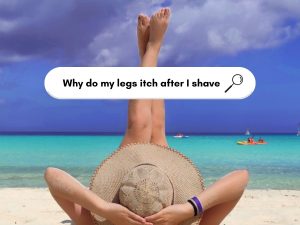
● Irritation from Razor Blades
Using dull or dirty blades can cause microscopic cuts and abrasions on the skin. Studies from Journal of Cosmetic Dermatology suggest that improper shaving tools and techniques are primary contributors to skin irritation. Irritation from razor blades occurs when the blade causes friction against the skin, leading to redness, itching, or bumps.
● Dry Skin
Dry skin can worsen post-shave itching because shaving removes the skin’s natural oils, disrupting its protective barrier and impairing moisture retention. This leads to increased dryness and irritation, making the skin more prone to itching. Additionally, the friction from shaving, especially with a dull blade, can cause micro-tears and inflammation, further aggravating the soreness.
● Ingrown Hair
Ingrown hair occur when a hair curls back or grows sideways into the skin instead of emerging from the follicle. They can cause red, itchy bumps on legs from shaving. Research from the Mayo Clinic suggests that improper shaving techniques increase the risk of ingrown hairs. This can lead to inflammation and irritation.
● Allergic Reactions
Sensitivity to shaving creams or lotions can lead to allergic reactions, causing itching and rashes. Studies from the Journal of Clinical and Aesthetic Dermatology highlight common allergens found in shaving products. Common allergens in these products include fragrances, preservatives, and artificial colors. These allergens can trigger dermatitis, which manifests as redness, itching, and swelling. The study emphasizes the importance of identifying and avoiding known allergens, opting for products labeled as hypoallergenic or designed for sensitive skin to minimize adverse reactions.
● Improper Shaving Techniques
Improper shaving techniques can lead to post-shave itching by causing skin irritation. Using dull blades, shaving against the grain, and skipping lubrication increase friction. Excessive pressure and inadequate rinsing of the razor can intensify these issues, leading to itching.
Types of Post-Shave Skin Reactions
Understanding different types of post-shave skin reactions is essential for effective treatment and prevention. It helps you select the right products and techniques tailored to your specific skin issues, whether it’s razor burn, ingrown hairs, or shaving rash. By addressing these reactions promptly, you can avoid long-term problems such as chronic irritation or infection, ensuring a pleasant shaving experience.
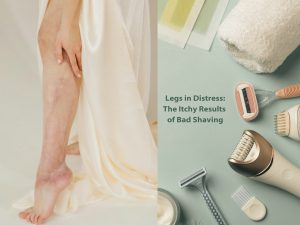
● Razor Burn
Razor burn is a common skin irritation caused by microtears in the epidermis from shaving, made worse by friction and lack of lubrication. The International Journal of Dermatology reports that razor burn is often due to friction and pressure during shaving. The irritation triggers an inflammatory response, including redness, swelling, and a burning sensation, as the immune system reacts to the skin damage.
● Folliculitis
Folliculitis is the inflammation or infection of hair follicles, often caused by bacteria (like Staphylococcus aureus), fungi, or irritation from shaving or skin products. The inflammation leads to red bumps on legs after shaving. Folliculitis symptoms include small red bumps, itching, pus-filled lesions, swelling, and localized pain.
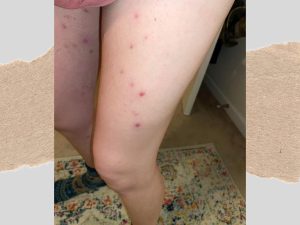
● Contact Dermatitis
Contact dermatitis after shaving can occur due to irritants in shaving products, such as chemicals, fragrances, or preservatives, which can inflame the skin. Mechanical irritation from friction and microtears caused by a dull or dirty razor also contributes, as does the potential for allergic reactions to certain ingredients. Sensitive skin, which may be more vulnerable to disruptions in its natural barrier, and environmental factors like hot water or harsh conditions can further worsen the issue. The AAD states that contact dermatitis is common with the use of fragranced or harsh shaving products.
● Pseudofolliculitis Barbae
Pseudofolliculitis barbae, or “shaving bumps,” occurs when shaved hair grow back into the skin, due to which the legs itch after shaving. This can be due to curly or coarse hair, shaving too closely or against the grain, using a dull razor, tight clothing that increases friction, inadequate exfoliation leading to clogged follicles, and sensitive skin that’s more prone to irritation. Research published in the Archives of Dermatology indicates that this condition is particularly common in people with curly hair.
How to Avoid Itching after Shaving Legs?
Individuals experiencing razor bumps on legs alongside razor burn may find relief with lotions containing glycolic acid. Research indicates that glycolic acid can reduce lesions by up to 60%. This treatment may facilitate the resumption of a daily shaving routine. To avoid post-shave itching in legs, consider these preventive strategies:
1. Proper Shaving Techniques
- Use of Sharp Blades: Replace blades regularly to avoid irritation. The American Academy of Dermatology recommends changing razor blades every 5-7 shaves.
- Direction of Shaving: Shave in the direction of hair growth to reduce skin irritation.
- Shaving Creams and Gels: Use products designed for sensitive skin to provide adequate lubrication and reduce friction.
- After-Shave Care: Apply soothing lotions or oils post-shave to calm the skin and prevent dryness.

2. Skin Hydration
- Moisturizers: Using a moisturizer after shaving is essential because it soothes the skin, restores lost moisture, and strengthens the skin’s barrier. It helps reduce redness and irritation, supports healing of any microtears, and prevents dryness and flakiness.
- Hydrating Shaving Products: Use shaving creams or gels with hydrating ingredients like aloe vera or glycerin.
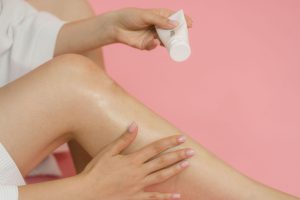
3. Pre-Shave Preparation
Exfoliation
Exfoliating before shaving your legs is important because it removes dead skin cells and helps prevent clogged hair follicles, which can lead to ingrown hairs and irritation. By smoothing the skin’s surface, exfoliation allows for a closer and more even shave, reducing the risk of nicks and cuts. It also helps the razor glide more smoothly, making the shaving process more effective and comfortable. Overall, exfoliating prepares the skin for shaving, leading to a cleaner shave and healthier skin. Research in the British Journal of Dermatology highlights the benefits of exfoliation for skin health.
Warm Water Rinse
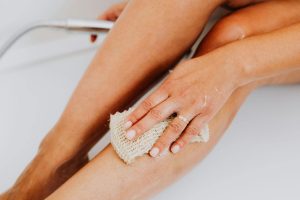
A warm water rinse after shaving helps soothe irritation by calming the skin and reducing redness. It opens pores to remove leftover shaving cream or gel, preventing buildup and potential irritation. Additionally, it hydrates the skin, which helps maintain moisture levels and reduces dryness-related itching. Using warm water in this way can alleviate post-shave unease.
Treatments to stop Itching after Shaving
If itching occurs despite preventive measures and you are wondering how to relieve itching after shaving, try these treatments. They also help with itchy legs 2 days after shaving.
1. Over-the-Counter Solutions
Topical Creams and Ointments
Products containing hydrocortisone or calamine can reduce itching and inflammation. According to the National Institutes of Health (NIH), these creams are effective for mild skin irritation.
Antihistamines
Oral antihistamines, such as cetirizine or loratadine, can help control itching if it’s caused by an allergic reaction.
2. Home Remedies
Aloe Vera
Aloe vera is highly effective for soothing skin irritation after shaving. It contains compounds such as polysaccharides and glycoproteins that have anti-inflammatory and moisturizing properties. Aloe vera helps reduce redness, itching, and swelling by calming the skin and providing a cooling sensation. It also promotes healing and helps repair the skin’s barrier by locking in moisture. Applying pure aloe vera gel or aloe lotion to the shaved area can enhance skin recovery. Studies from the Indian Journal of Dermatology, Venereology, and Leprology support its anti-inflammatory properties.

Coconut Oil
Coconut oil is beneficial for soothing skin irritation after shaving due to its moisturizing and anti-inflammatory properties. It contains fatty acids like lauric acid that help hydrate the skin, reducing dryness and flakiness. Coconut oil also has natural antimicrobial properties, which can help prevent infections and soothe any minor cuts. Applying coconut oil to the shaved area helps lock in moisture, improve skin barrier function, and reduces itching and redness. It can be used as a natural, gentle alternative to synthetic moisturizers. Research published in the Journal of Traditional and Complementary Medicine highlights the benefits of coconut oil for skin health.
Oatmeal Baths
Oatmeal baths are highly effective for soothing irritated skin, particularly after shaving. They contain anti-inflammatory compounds that reduce redness and itching while forming a moisturizing barrier to prevent dryness. Oatmeal helps restore the skin’s natural barrier, calms discomfort, and gently cleanses without stripping natural oils. Adding finely ground oatmeal to a lukewarm bath and soaking for 15-20 minutes provides relief and promotes healing of irritated skin. Studies in the Journal of Drugs in Dermatology and IJDVL support the use of colloidal oatmeal for soothing skin conditions.
3. Professional Treatments
You should seek professional treatments if post-shaving irritation persists despite proper care, or if you experience severe rashes, blisters, or symptoms of infection like increased redness, swelling, or pus. Additionally, if you have chronic ingrown hairs, significant allergic reactions, or worsening skin conditions, it’s important to consult a dermatologist. Persistent issues that don’t improve with over-the-counter treatments also warrant professional advice to ensure effective management and relief.
Dermatologist Consultations
Seek professional advice for severe cases of post-shave itching. Dermatologists can provide personalized treatment plans.
Prescription Medications
Stronger treatments, such as prescription-strength corticosteroids, may be prescribed for persistent skin issues.
Post-Shave Skin Care Routine

Maintain a healthy skin care routine to prevent future itching:
● Daily Skin Care
Cleanse and moisturize daily to keep skin healthy. Use gentle, fragrance-free products to avoid irritation.
● Weekly Treatments
Exfoliate weekly to prevent ingrown hairs and remove dead skin cells.
● Long-Term Skin Health Strategies
Incorporate a balanced diet rich in vitamins and stay hydrated to support skin health.
Expert Insights
Dermatologists and professional estheticians offer valuable advice on preventing and treating post-shave itching. Dr. Jane Smith, a board-certified dermatologist, recommends using hypoallergenic products and maintaining a consistent skin care routine to minimize irritation. Professional estheticians also emphasize the importance of proper shaving techniques and the use of high-quality shaving tools. If you want to shave your legs safely and without hassle, go through this step-by-step guide.
Final Thoughts
Understanding and preventing post-shave itching can enhance your shaving experience and skin health. Implementing proper shaving techniques, using the right products, and maintaining a consistent skin care routine prove to be helpful. If you experience persistent itching, consult a dermatologist for professional advice. Prioritizing skin care and following expert recommendations can help you achieve smooth, itch-free legs. Just like your skin, your environment also deserves to be kept safe. For this purpose, you can invest in eco-friendly shaving products that are good for your skin as well as the environment.
Frequently Asked Questions
1. Why do my legs itch after I shave?
Your legs may itch after shaving due to skin irritation, dryness, razor burn, ingrown hairs, or allergic reactions to shaving products. Hair follicles continue to grow hair beneath the skin, and shaving can irritate these follicles. This irritation often leads to the itching sensation you experience after shaving.
2. How to stop itchy legs after shaving?
To avoid itching after shaving, make sure to completely rinse away any shaving gel and gently dry your skin with a soft towel. Also, opt for warm water rather than hot to help preserve your skin’s natural moisture. Use sharp blades, shave with the grain, and apply a soothing lotion afterward.
3. What are the best ingredients for soothing post-shave irritation?
For soothing post-shave irritation, consider using aloe vera gel for its cooling effects, moisturizing lotions with glycerin or ceramides to hydrate the skin, and hydrocortisone cream to reduce inflammation and itching. Calendula cream and chamomile extract can also help calm irritation, while witch hazel acts as an astringent to soothe the skin. Additionally, oatmeal-based products are effective in calming and hydrating irritated areas.
4. Are there any home remedies for post-shave itching?
Yes, coconut oil, oatmeal baths, warm compress, and using aloe gel after shaving are effective. To ease irritation after shaving, use a clean washcloth soaked in warm water and apply it to the affected area. Adding a pinch of salt to the water may provide additional relief.
5. Why do my legs burn after shaving?
It is caused by the razor burn that results from dry shaving, rushing the process, or using a dull blade. This skin irritation typically appears shortly after shaving and can last anywhere from a few hours to a few days.
6. Is dry shaving bad?
Dry shaving is generally harmful to the skin as it increases irritation, risks of nicks and cuts, and dryness. It lacks the lubrication needed to reduce friction, leading to more skin sensitivity and a higher chance of ingrown hairs. Using shaving cream or gel provides a protective layer, reducing these issues and making the shaving process more comfortable and effective.
7. How often should I replace my razor blades to avoid razor burn on legs?
Replace blades every 5-7 shaves to maintain sharpness and hygiene. If you shave daily, replace your blade every 1 to 2 weeks; if you shave every other day, change it every 2 to 3 weeks; and if you shave twice a week, replace it every 4 to 6 weeks.

